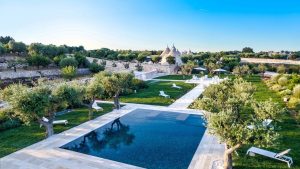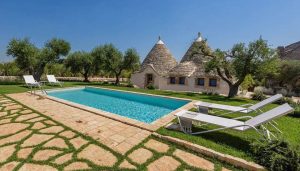The town of Alberobello, in Puglia with its naturally romantic setting, narrow streets and Trulli cones – Apulian dry stone huts – looks like a town that has come straight out of a fairy tale. Some even claim to have seen a fairy or a gnome frolicking between the Trulli cones.
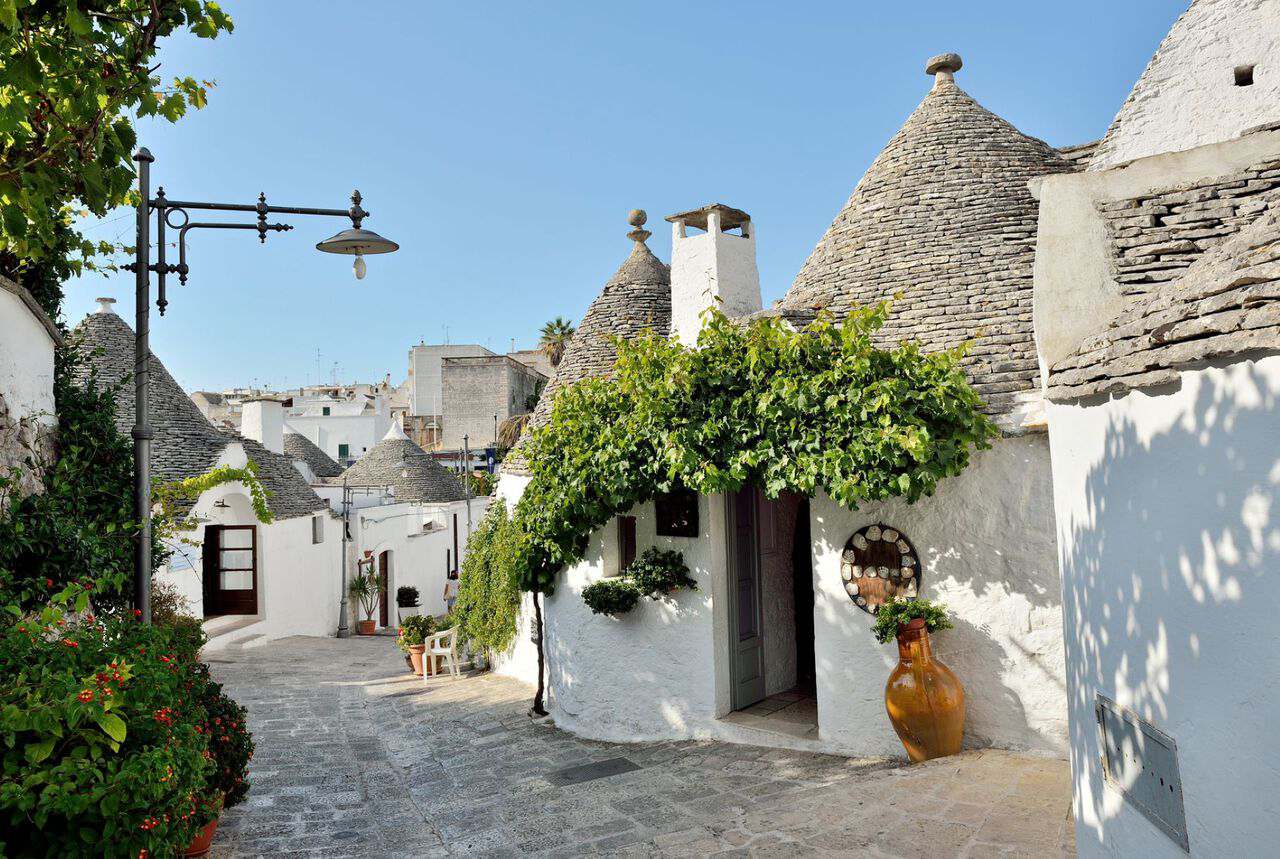
Alberobello and its Trulli were declared a UNESCO heritage site in 1966. Though the Trullo (a single hut) is not unique to Alberobello – you can find these cone-shaped buildings elsewhere in Puglia – Alberobello is the only town that has a historic centre composed entirely of Trulli: you can count 1500 spread throughout the town.
TOP TIP: Don’t forget to book your stay in one of Puglia Paradise’s beautiful luxury villas. They have several traditional Trulli villas in Alberobello such as Trullo Atena and Trullo Incanto d’Itria.
What are Trulli?
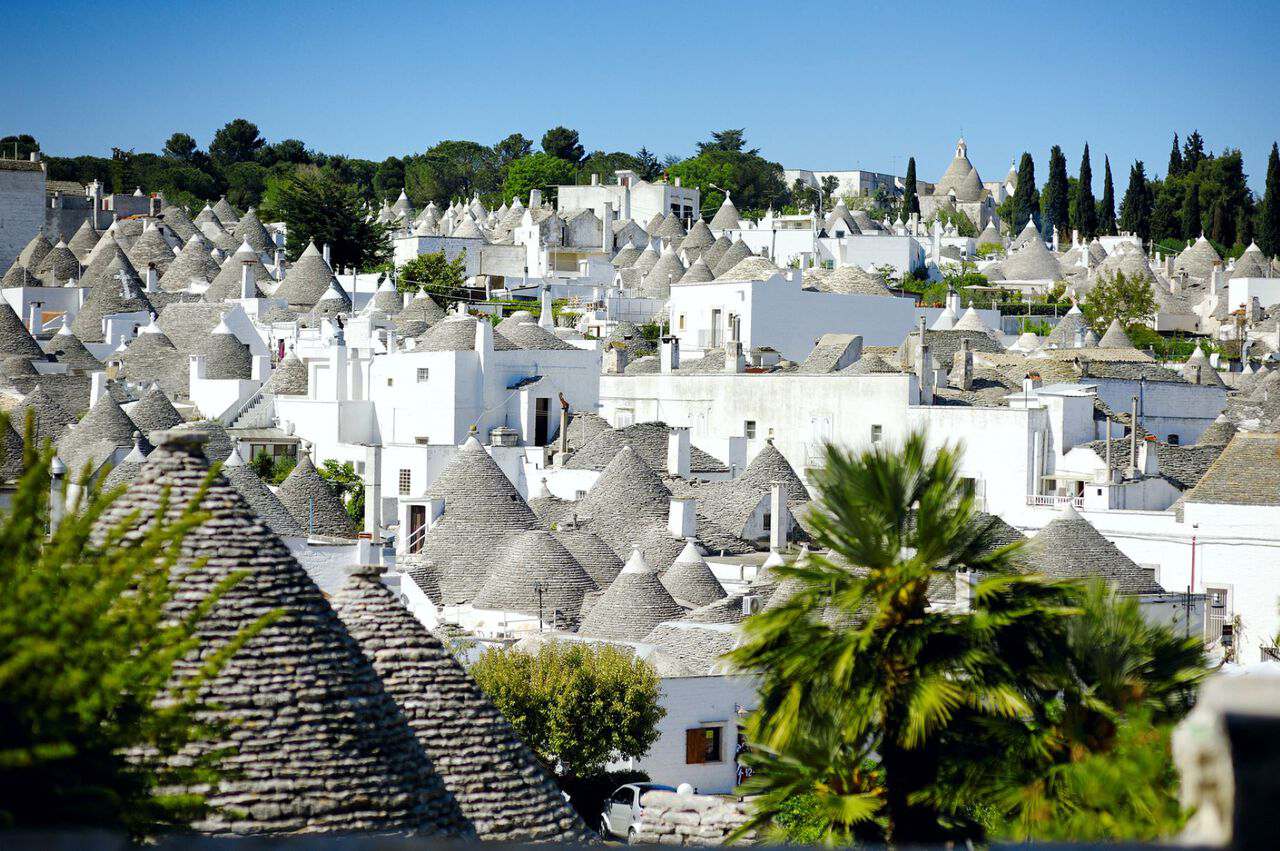
The Trulli were originally peasant dwellings where those who cultivated the land could have a place to sleep and keep their working tools.
The white lime buildings are topped by a characteristic cone-shaped roof covered with grey stone tiles with a white lime tip called “Pinnacoli”. The cone is built without any framework or mortar cement. The tiles are laid one on top of the other in increasingly narrow circles up to the final funnel.
Inside the Trulli is characterized by a room, or several rooms, which are generally added around the central unit. The Trulli are habitable only on the ground floor, but below them cisterns can be dug to conserve rainwater.
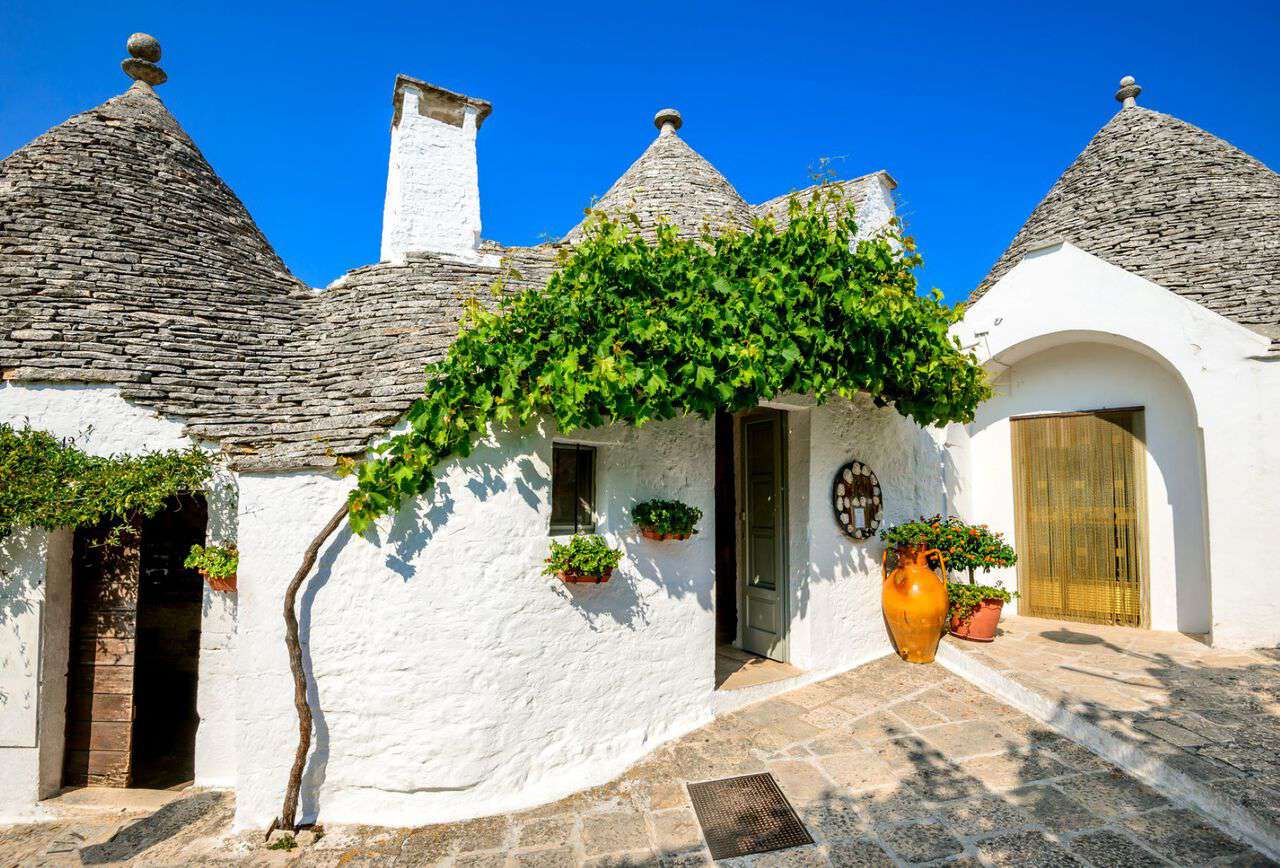
Thanks to the particular construction technique, Trulli are warm in winter and cool in summer.
There are symbols on Trulli’s cones and these are lime handmade drawings and have different origins and inspirations ranging from Judaism, zodiacal and astral elements, Christianity and even Paganism.
Some of the souvenir shops in downtown peddle legends that reveal the meaning of each symbol.
Why Alberobello was built with Trulli?
At the end of the 15th century, a tax was payable whenever a Trulli was erected. In a tax evasion strategy the ruling Count Giangirolamo II forbade the use of materials such as binding mortar cement. Instead the cones were made using an interlocking stone technique.
This way the huts could be demolished quickly with just the tugging of a nose tied around the pinnacle of the cone when the emissaries of the Kingdom of Naples came into town to inspect the town.
Obviously it was always the peasant who lost out because he had to demolish the Trullo during the check and then rebuild it but still had to pay tax to the Count.
In 1797, the 3,500 inhabitants finally rebelled against the feudal yoke.
Want to see the Trulli in Alberobello for yourself? Want to stay in one?
Our sponsor, Puglia Paradise, have several traditional Trulli villas in Alberobello available to rent such as Trullo Incanto d’Itria and Trullo Atena.
Both villas have stunning private pools and external kitchens. Trullo Incanto d’Itria has a beautiful garden while Trullo Atena has a private Turkish bath.
CLICK HERE to book Trullo Incanto d’Itria CLICK HERE to book Trullo Atena
What else is there to see in Alberobello?
The small historic centre with its alleys and narrow streets can be explored in just a day. Keep your camera handy as this is a highly instagrammable scene then pick up a souvenir in one of the tiny shops that sell out of a Trulli.
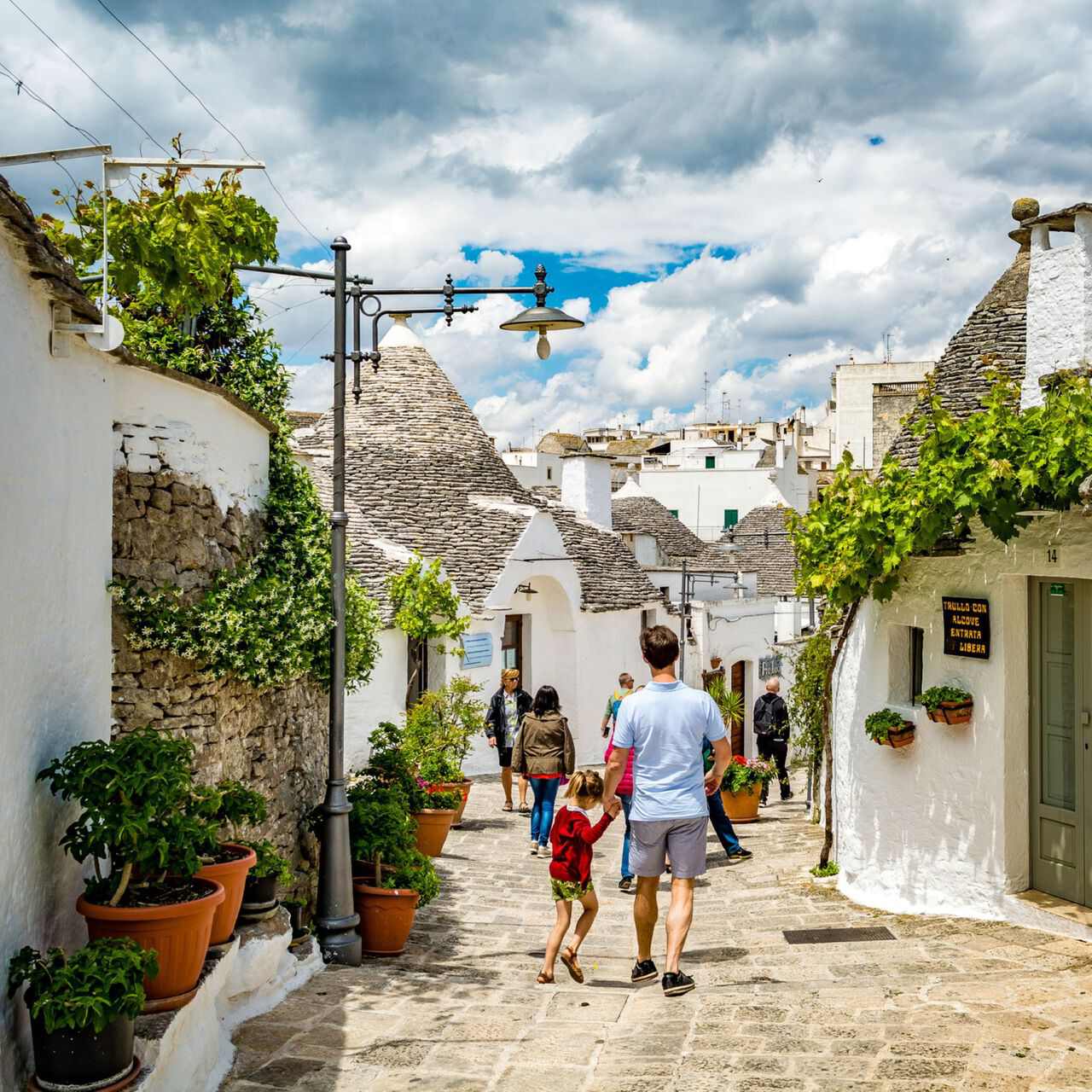
The most famous Trulli districts of Alberobello are the spectacular Rione Monti and the more secluded and less touristy Rione Aia Piccola.
At the top of Rione Monti stands the Sant’Antonio Church. The building itself is simple, but the peculiarity lies in its typical Trulli shape.
One of the most extraordinary buildings in Alberobello is the Trullo Sovrano, built at the end of the 18th century. The name emphasizes that at the time it was the only Trullo with a raised floor. The dome is 14 meters high – an extraordinary measure for a dry construction.
Inside there are 12 small cones and a stone staircase to access the upper floor. The dome is supported by four arches and the walls contain hidden cupboards, niches and alcoves. The Trullo Sovrano is a national monument since 1930.
Disclaimer: this article was sponsored by Puglia Paradise
Credit: Source link
